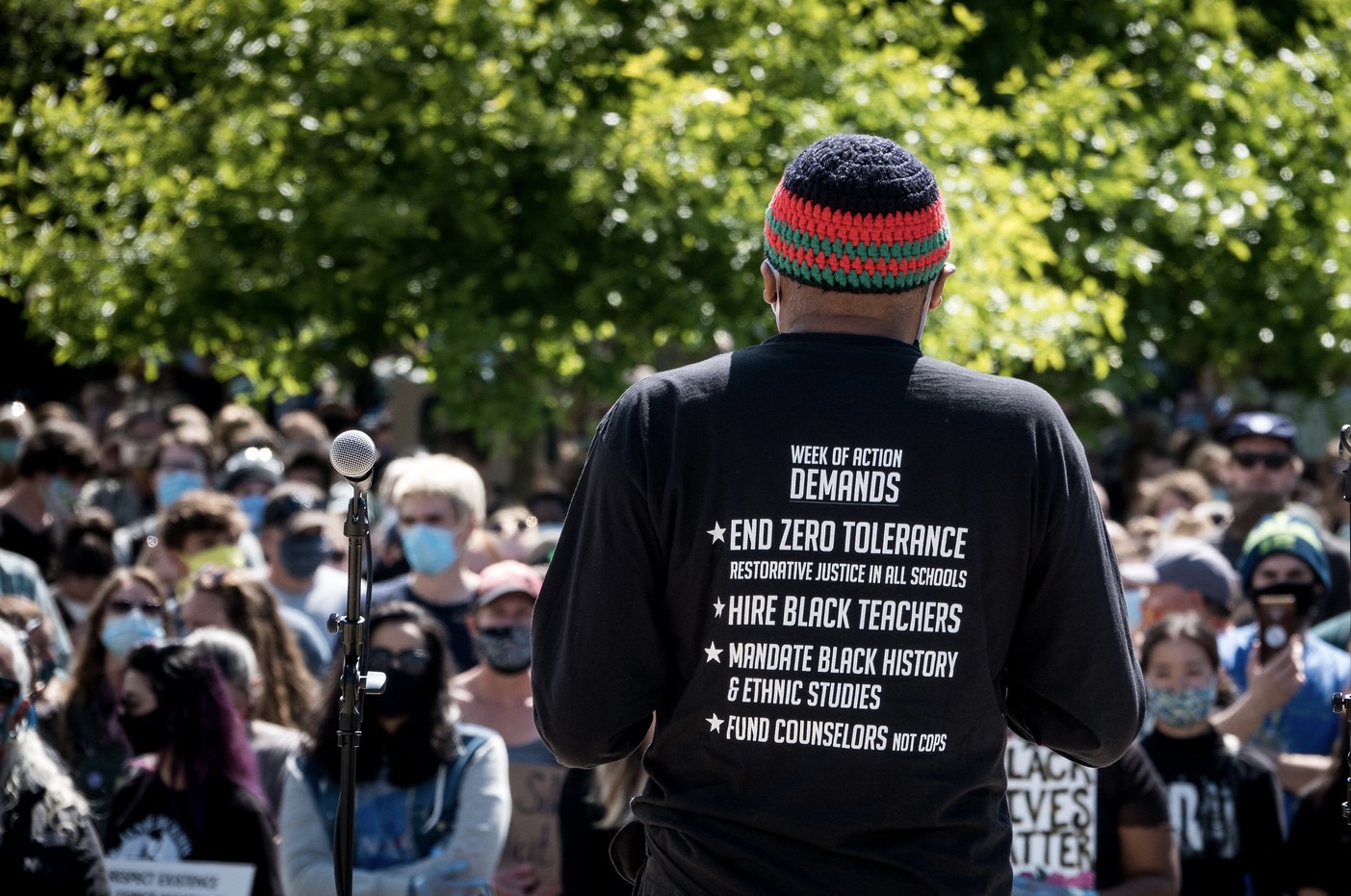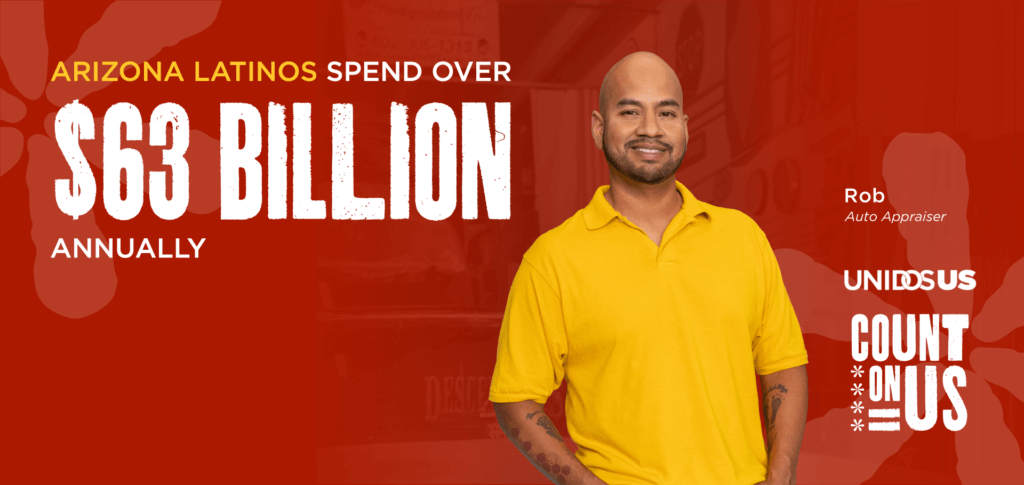Q&A: Civil Rights Activist Dr. Vernon Damani Johnson Looks at Juneteenth as a Launch Point for Examples of Interracial Solidarity Throughout History
Juneteenth is the day on June 19th, 1865, when federal troops marched into Galveston, Texas to secure the freedom of the last enslaved Black Americans in the country. More than two years earlier, on January 1, 1863, the Emancipation Proclamation made slavery illegal in places where Union troops were in control. The Confederacy ultimately surrendered on April 8, 1865, but the state of Texas continued resisting, and most of the enslaved there had no idea of their rights. Juneteenth celebrations have been going on ever since, but it wasn’t until last year that President Joe Biden signed into law the Juneteenth National Independence Day Act.
Across the nation, educators and advocates have lifted their voices to commemorate the now-official Juneteenth holiday and raise awareness about the ways all people can use it as a time for learning about Black history and current U.S. race relations. Civil rights activist Dr. Damani Vernon Johnson—a retired professor who spent 30 years teaching political science at Western Washington University in Bellingham, Washington and continues to work as a community organizer—discusses examples of interracial solidarity just prior to Juneteenth up to today.
-The featured image of Dr. Johnson is courtesy of Sattva Photo.
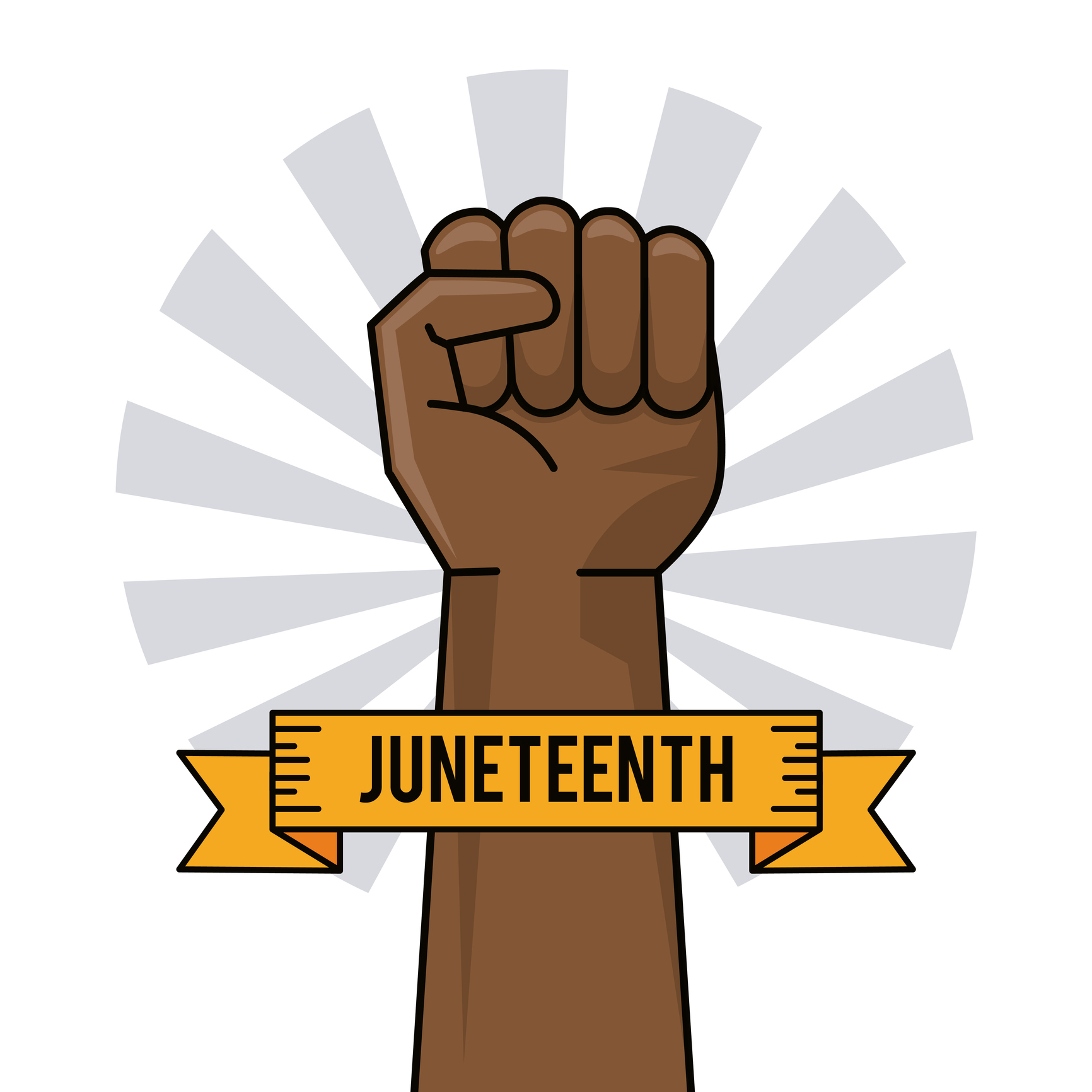
Q. Even before Juneteenth, Black Americans in Texas were seeking out their own paths to freedom. Can you speak a bit about how they harnessed relationships with other racial and cultural groups during that time?
A. During the period of slavery, people would escape to the areas beyond recognized borders and immerse themselves in Indigenous communities. As white settlers encroached ever further, those biracial/mixed race communities fought in unison to stave off settler advances. One great example of this was enslaved people who escaped into Florida and immersed themselves into the Seminole Nation in the 1700s and the 1800s. Florida was a Spanish colony until it was sold to the United States in 1821. Attempts were made to re-enslave Black Seminoles after that, and two Seminole-US wars were fought as the United States extended its dominion into the Florida peninsula.
As most of your readers know, Texas was part of Mexico until 1836, when white American settlers fought the war for Texas independence. Enslaved people had also been escaping into Texas, where under Mexican law, slavery had been illegal since 1821. With slavery once again legal in Texas, enslaved people and free Blacks fled from the southern United States through Texas and across the Rio Grande for their freedom in the “southern underground railroad.” Afro-Mexicano communities comprised of the descendants of those escaped slaves still exist. And at least one place, Nacimiento de los Negros in Coahuila State, celebrates Juneteenth to this day.
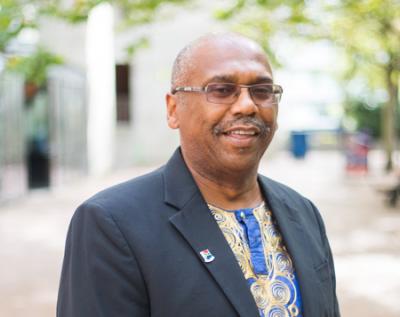
Q. About one hundred years passed between the abolishment of slavery and what we now know as the civil rights movement of the 1960s. Can you talk a bit about what U.S. race relations looked like in those times and what examples you have of interracial organizing before the 1950s and 1960s?
A. During the Reconstruction era (1866-76) there were early efforts at Black-white solidarity among some small farmers and the rural poor. And again in the Populist Movement in the 1880s.
One finds labor solidarity among Mexican American and Japanese farmworkers in California in the early 1900s. After some early victories, the Sugar Beet Farm Laborers’ Union was denied American Federation of Labor support and disintegrated after a few years. In the 1960s Mexican Americans and Filipino Americans banded together in the United Farmworkers movement, the first successful long-term unionization movement among farmworkers in US history.
During the Great Depression the more progressive Congress of Industrial Organizations (CIO) stood for anti-racist policies. Though the record of CIO organizing on the shopfloor level was mixed, Black-white labor solidarity did occur in many CIO unions, and the labor movement became an important piece in the civil rights coalition that came together in the post-World War II era.
The National Association for the Advancement of Colored People was a Black-white civil rights organization founded in 1909 and financed by liberal white money. In the 1930s the NAACP began to fight Jim Crow segregation in education in the federal courts. In a series of cases beginning in the 1930s the NAACP Legal Defense Fund won Supreme Court decisions that eroded Jim Crow segregation in higher education.
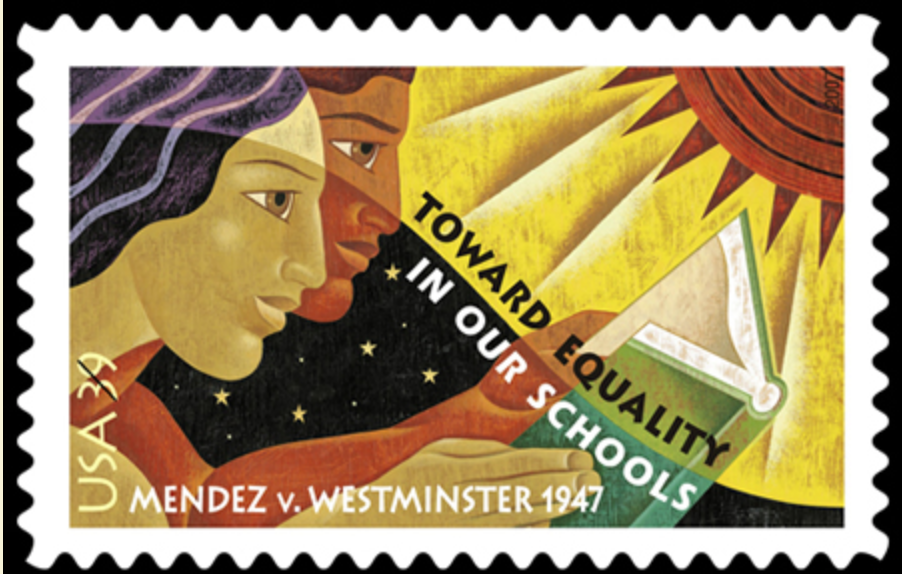
Lesser known are the desegregation cases the League of United Latin American Citizens (LULAC) pursued in the 1940s. In Mendez et. al. v. Westminster School District of Orange County (1946), the US District Court of Appeals ruled that the segregation of Mexican American students violated equal protection under the 14thAmendment. The NAACP filed an amicus brief in Mendez. It later admitted that Mendez planted the idea that pursuing K-12 cases might be more fruitful terrain in overturning the ”separate but equal” doctrine. From that time on the NAACP took up K-12 cases. Their efforts culminated in the Brown v. Board of Education case in 1954, in which the US Supreme Court ruled that racial “separate but equal” policies were unconstitutional. Though not in the realm of street organizing, the Mendez case illustrates Brown-Black collaboration in advancing civil rights.
Q. Obviously we know that as Black Americans became organized to topple Jim Crow laws and win the right to vote, other ethnic groups began forming their own movements. For example, UnidosUS, then called the National Council of La Raza, was born out of that and the farmworker movement. But today, many people don’t know how these various groups that you might call minoritized nationalists got organized or why they chose certain ideological and structural paths. You do a lot of work on this. Can you explain?
A. Nationalist thinking, the idea that people of color are distinct nations with their own cultures and heritage, and not simply an ethnic group within a larger nation, grows out of the increasing frustration with white supremacy and segregation, and with white resistance to racial integration. Minoritized nationalism has a long history among African Americans. One rich source of it is Pan Africanist thought going back to the 19th Century with people like Bishop Henry McNeal Turner and W.E.B. Dubois. Turner, a bishop of the African Methodist Episcopal Church, spearheaded the sending of Black American missionaries to Africa in the 1880s. They combined the gospel with a message of Black unity and decolonization.
Dubois, the first Black person to receive a Ph.D. from Harvard, organized the first Pan African Congress in 1900. Held in London, it attracted people from all around the African diaspora. In the 1920s Marcus Garvey, a Jamaican, built a powerful “Back to Africa” movement from his base in New York City. With over 6 million members, it is still the largest organization of Black people ever built outside of Africa.
In the 1960’s Malcolm X gained popularity among young African American activists who had borne the brunt of white violence in the South in the integrationist, non-violence movement led by Martin Luther King. Malcolm and the Nation of Islam were most prominent in the urban north where segregation, while not legal, existed “in fact” and could be quite harsh.
Malcolm declared that Black people should stop trying to integrate into white society and institutions, and create their own institutions, especially, along economic, political, educational and cultural lines. After Malcolm’s assassination, the Student Nonviolent Coordinating Committee (SNCC), which had been a frontline organization in the integrationist movement, declared in 1966 that their new goal was “Black Power.” That entailed building new Black nationalist institutions of the kind that Malcolm talked about.
While SNCC first called for Black Power, the Black Panthers became the most prominent Black nationalist organization of the time by giving voice to urban northern alienation. They combined armed self-defense against police violence with social services such as a newspaper, people’s commissaries, free breakfast programs for school children, community health clinics, and support for the families of the incarcerated.
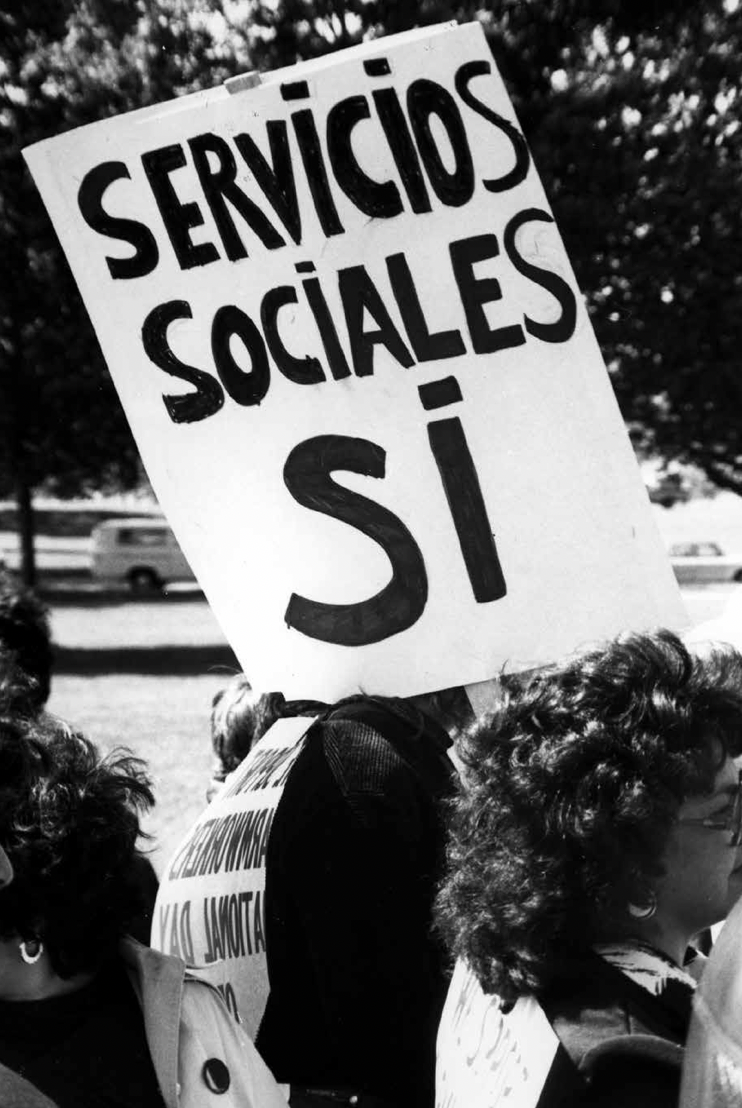
Mexican American activists suffering similar frustrations with politics inside the system also sought to create autonomous institutions. In 1965, Rodolfo ”Corky” Gonzales resigned from a number of positions in anti-poverty programs and the Democratic Party in Denver, Colorado, and established the Crusade for Justice. In a vein similar to the Black Panthers, The Crusade had a newspaper and what they called Freedom Schools that offered courses in Mexican American history, culture, and the Spanish language. Gonzales was one of the people who popularized the identity of “Chicano,” a primary architect of the idea of Atzlan and a founder of La Raza Unida Party.
Other nationalist organizations in the urban setting picked up on the Black Panther model of militant protests and armed self-defense. Those included the American Indian Movement (AIM) in the Twin Cities, the Chicano Brown Berets across the Southwest, and the Puerto Rican Young Lords in many cities around the country.
Inspired by the civil rights mood sweeping the country in the 1960s Mexican Americans and Native Americans began to resuscitate claims to rights forgotten in the white settler rush to seize lands in the name of Manifest Destiny. That frustration led to dramatic episodes like the 1969 occupation of Alcatraz Island, the former federal prison in San Francisco Bay and the demand that it be turned over to Native Americans. They based their claim on a federal law that permitted the return of land used by federal agencies if those facilities were closed down.
In 1972, AIM was part of a coalition of Native organizations that sponsored the “Trail of Broken Treaties,” a car caravan from San Francisco to Washington D.C. that dramatized the deterioration of Indigenous treaty rights. Reies Lopez Tijerina’s movement in New Mexico around Mexican land grants that had been protected by the Treaty of Guadalupe Hidalgo in 1848, but trashed by settler land grabs across the Southwest, was analogous to the Native American treaty rights movement.
The most radical minoritized nationalist movements called for a revolution to overthrow American capitalism and favored an alliance with radicals of other races to do so. The Black Panthers, Brown Berets, and elements within AIM espoused such goals. Other groups like the Nation of Islam and the Republic of New Afrika sought the cession of five states in the deep South to form a new African American Nation (the Communist Party of the United States also had this goal as part of its overall project to overthrow the capitalist system).
Q: But in spite of these differences, even the most radical came together in initiatives such as the Rainbow Coalition. Why is it so important to remember that and how did these movements influence your own interracial approach to organizing?
A. I think when you say radical, you’re referring to the Rainbow Coalition initiated by Black Panther Fred Hampton in Chicago in the late 1960s. Despite his young age, Hampton had an advanced understanding of Huey Newton’s theory of “intercommunalism.” That idea held that culturally distinct communities were exploited by capitalism everywhere in the world, and that communal national liberation movements worldwide should coalesce to overthrow capitalism and erect socialism internationally. Hampton was beginning to organize among Latinos and working class whites under the Rainbow Coalition framework around Chicago in 1969. That’s why he was so dangerous to the police state and had to be eliminated. He and fellow Panther Mark Clark were assassinated by the Chicago Police and the FBI in December of that year, gunned down as they slept in their apartment by a sea of bullets.
So minoritized nationalists were divided into two tendencies: cultural nationalism and revolutionary nationalism. Cultural nationalists created racially homogeneous institutions parallel to the institutions of the larger white-dominated society. Revolutionary nationalists were interested in parallel sets of institutions, but also sought the destruction of capitalism and the building a socialist system in its place. Toward that end, revolutionary nationalists formed coalitions with anti-capitalist movements of people from other racial and ethnic groups. The Black Panthers, Brown Berets, Young Lords, and AIM allied with each other, and with white radical left groups of the day like the Weathermen, the Youth International Party, and the Young Patriots.
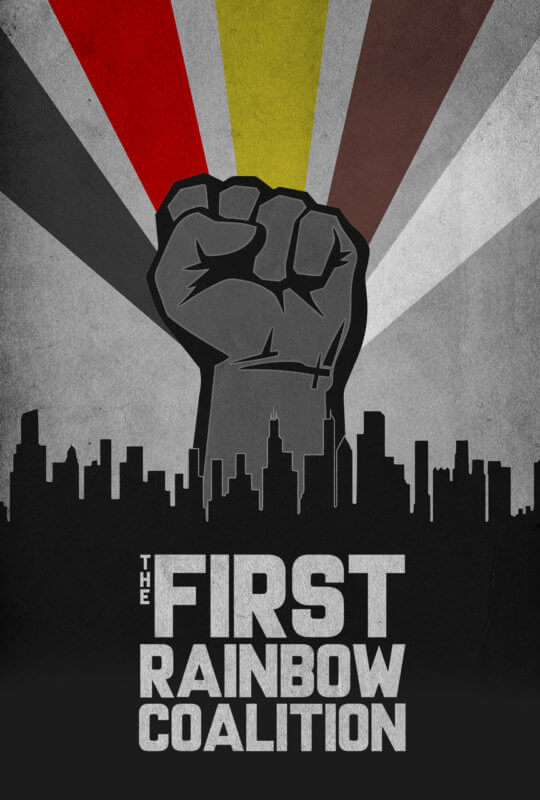
The point to be made here is that the most radical sections of the minoritized nationalist left in the 1960s and 1970s were doing interracial organizing. My own journey went from being a Black Power advocate in the late 1960s to a Pan-Africanist committed to the unification of Africa under scientific socialism by the mid-1970s. As Pan-Africanists we were in solidarity with the non-Black parties like the Sadanistas (FSLN) in Nicaragua, the Faramundo Martí Liberation Front (FMLN) in El Salvador, the Irish Republican Army (IRA), and the Palestinian Liberation Organization (PLO).
My own organization, the All African People’s Revolutionary Party (AAPRP) was quasi- underground, because its leader, Stokely Carmichael, was under police state surveillance. The work was dangerous. Many leaders were killed. Others went into exile abroad, or underground here. Others, disoriented and fearful for their lives, gave up on revolutionary politics. Still others, I’d like to include myself here, never abandoned the critiques of racism and capitalism that we had learned as revolutionaries, but immersed ourselves in the struggles around social justice in the communities where we lived.
There are two points to be made here. First, Jesse Jackson, who’d been working in mainstream civil rights politics in Chicago during Fred Hampton’s times, resurrected the idea of the Rainbow Coalition in his presidential campaigns of the 1980s. Many of the old left from the 1970s re-emerged inside of the Jackson campaign. Jackson’s movement was not revolutionary, but it included a critique of the twin oppressions of systemic racism and capitalism. Many of us had learned that our movements weren’t strong enough to assault capitalism frontally.
For my own part, I had been studying Western European social democracy. Social Democrats originated as “non-communist” socialists. They argued that an ethic of a socialist distribution of goods and services could be engineered within a system of free enterprise and markets. Jackson’s platform, though never explicitly stated, was social democratic. Bernie Sanders calls himself a democratic socialist today. It’s the same thing. Sanders was a supporter of Jackson in 1988. His movement today is heir to the Rainbow Coalition of the 1980s.
But getting back to this issue of multiracial organizing, the Rainbow Coalition continued the multiracial work of revolutionary nationalists since the 1960s, but in the mainstream of the political system. As we’ve discussed earlier, the mainstream of the civil rights movement had also witnessed considerable interracial/multiracial coalescing in a myriad of local, regional and national formations going back to the 1940s. Rainbow activists situated themselves into the structures of the Democratic Party from the 1890s forward. The language of multiracial democracy ringing from the lips of progressive Democrats today is born from the work of Rainbow activists.
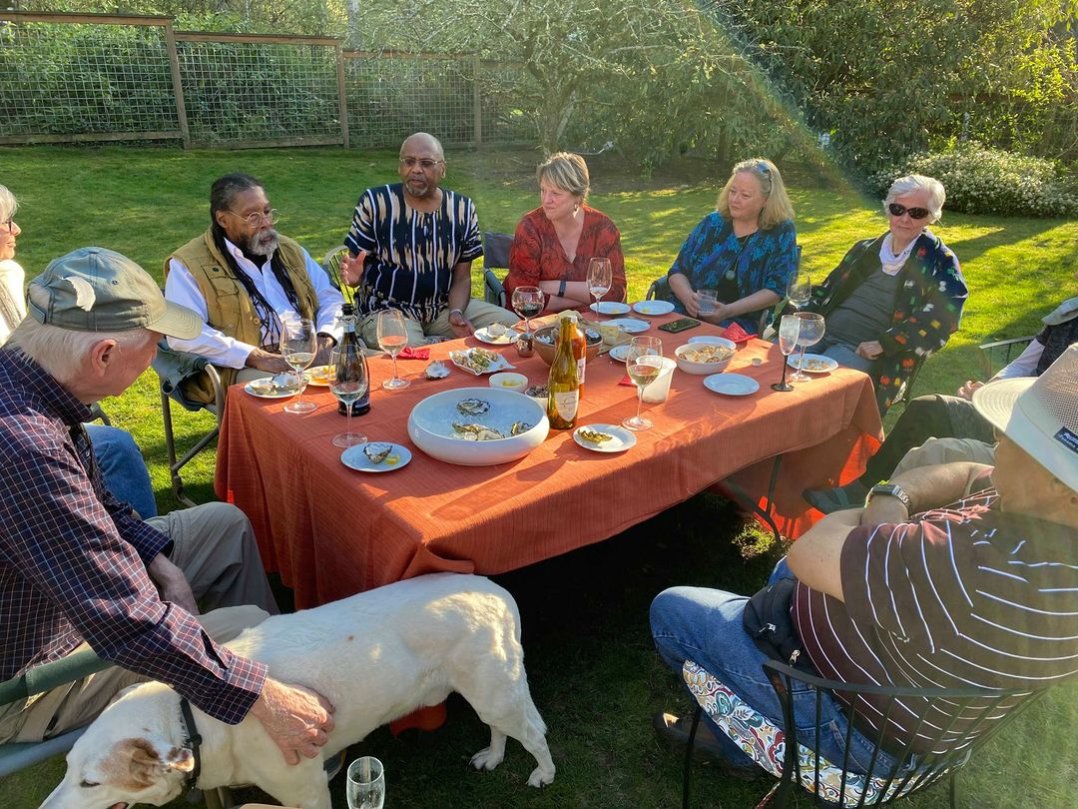
Q: When it comes to diversity, your part of the country, the Pacific Northwest, is not a place that many think about as doing much around interracial organizing. And yet, your research— and your own activism in the area—shows that there have been some significant movements throughout the past 30 or 40 years. Why is that?
A. The Pacific Northwest (Washington, Oregon, Idaho, Alaska, and Western Montana) is a region with a relatively small percentage of peoples of color, but it is still a region with a history of systemic racism. That said, the Native American population is among the largest in the country. There are 29 federally recognized tribes in Washington with a population of over 100,000, most of whom are clustered within 100 miles of the Seattle-Tacoma metropolitan area. I’ve already talked about how the politics around treaty rights defined the civil rights era in Indian Country. The issue of fishing rights became the focal point for tribes around Puget Sound in the 1960s, and that battle riveted the entire region for more than a decade. The Natives won the fishing war in 1974 when the federal district court ruled that their 1854 and 1855 treaties entitle them to half the catch of Puget Sound salmon and steelhead.
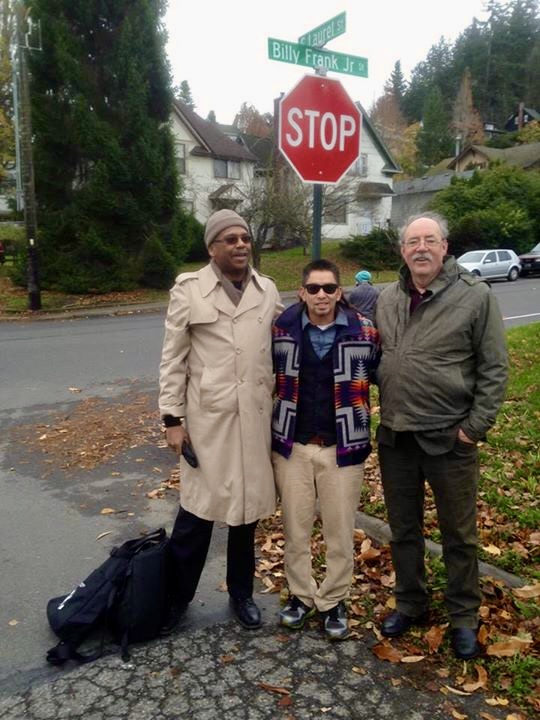
The civil rights mood was impacting the other minoritized populations of the region as well. The Seattle chapter of the Black Panthers was one of the strongest outside of California in the entire West. Still, movements among the relatively small communities of color were not able to make as much impact as they would have liked. The Asian and African American communities in Seattle had been ghettoized alongside one another and were heavily intermingled. The Mexican American community was small and scattered.
In the nationalist phase of the movements after 1966, dramatic episodes of interracial solidarity took place. In the space of a few years in the late 1960s and early 1970s African, Asian, Native, Latino Americans, and the white left took turns supporting the movements of each other. They moved from African-Asian American unity among construction workers, to the occupation of the old Beacon Hill School and old Fort Lawton: the first to create El Centro de la Raza, a Latino community service center that is today an UnidosUS Affiliate, the latter for a Native American center. And everybody was against the Vietnam War!
Thus, though they didn’t have the language for it then, there was already a “Rainbow Coalition” afoot in Seattle by the 1970s. It was not surprising then, that Jesse Jackson’s idea took hold in Seattle and the surrounding Puget Sound area during his first campaign in 1984. By 1988 a Washington State Rainbow Coalition had been established that truly was multiracial. It was probably the most broad-based state Rainbow Coalition chapter in the country.
The Rainbow Coalition as a grassroots movement had petered out by the mid-1990s. But when the Neo-Nazis and the Militia Movement gained prominence, the Northwest Coalition Against Malicious Harassment anchored a network of grassroots task forces opposing the far right. Advancing the migration of white supremacist to the Northwest because it was the whitest part of the country, the militias targeted racial minorities, sexual minorities, and religious minorities (especially Jews). The Northwest Coalition arose to defend those groups. Encompassing six northwestern U.S. states, The Northwest Coalition was also multiracial, multireligious, and LGBTQ friendly.
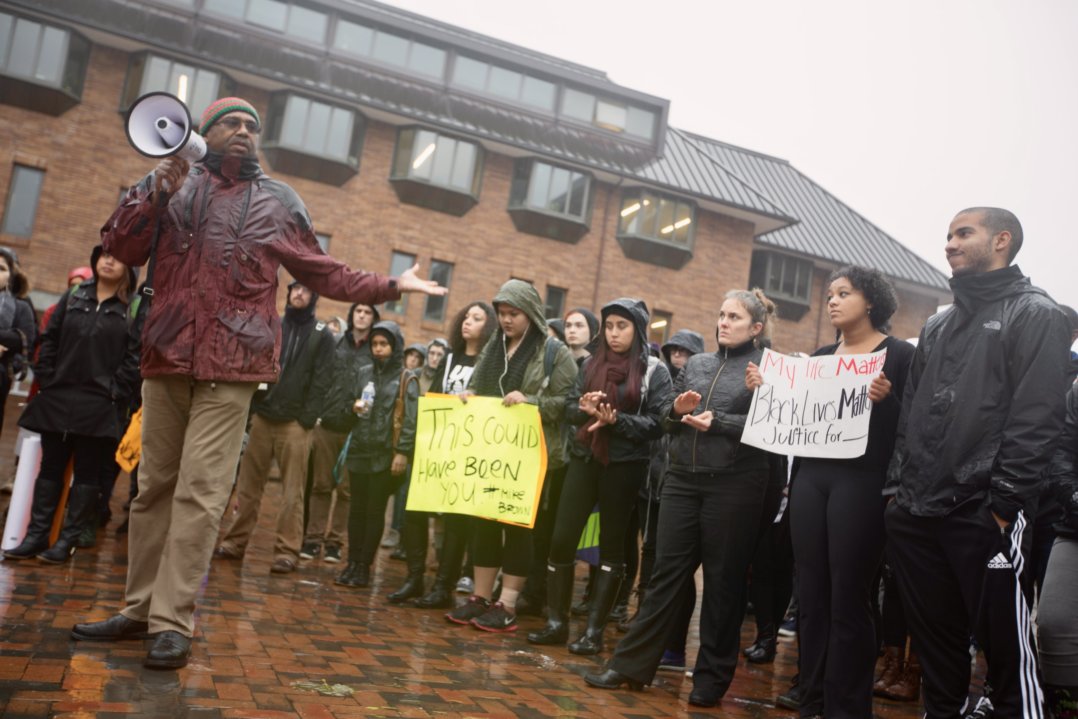
Q. You were preparing for retirement just as the Black Lives Matter movement became a national cry and even more so after the murder of George Floyd. How has it been to try to organize not just across races, but across generations and why is it so important to engage in that intergenerational dialogue?
A. The challenges of intergenerational organizing were already with us from the time Donald Trump was elected president. Beginning with the Women’s March the day after Trump’s inauguration, progressives of all identity groups organized to resist Trump’s policies and seize power from a Republican Party that had succumbed to his demagogy. Moreover, Baby Boomers, Generation Xers, and Millennials converged in the public square to oppose Trumpism. Older organizations that had been around since the 1960s and earlier took up the challenge, and a host of new formations such as Indivisible also sprung up.
Intergenerational and interracial tensions often surfaced. Intergenerational between Boomers and the younger folks over how relevant the legacies from “back in to day” were for the present; and racial tensions in multiracial groups, and between BIPOC organizations and white organizations attempting to coalesce over the same issues.
In my own experience, we had founded the Whatcom Human Rights Task Force in the 1990s to fight the Militia movement. It was a multiracial organization then, became dormant after the millennium, but re-emerged after the Women’s March in 2017. It nearly blew up as a younger group of BIPOC folks asserted their presence, and the older group of mostly white folks who’d founded the organization were put off by younger folks. Me and a couple of the other elders fought to keep the young people from being expelled from the group. Most of the older people drifted away, and the organization is now in the hands of a multiracial group of Millennials. In the midst of the crisis we tried to have a restorative justice talking circle, but the effort collapsed due to lack of will. I’m still out there rockin’ and rollin’ with the younger crowd, but my older friends have disavowed the work. In my mind that is a tragedy. It will take the accumulated wisdom of the older generation alongside the vision for the future and the energy of the young to create the broad-based multiracial democratic movement for the 21st century.
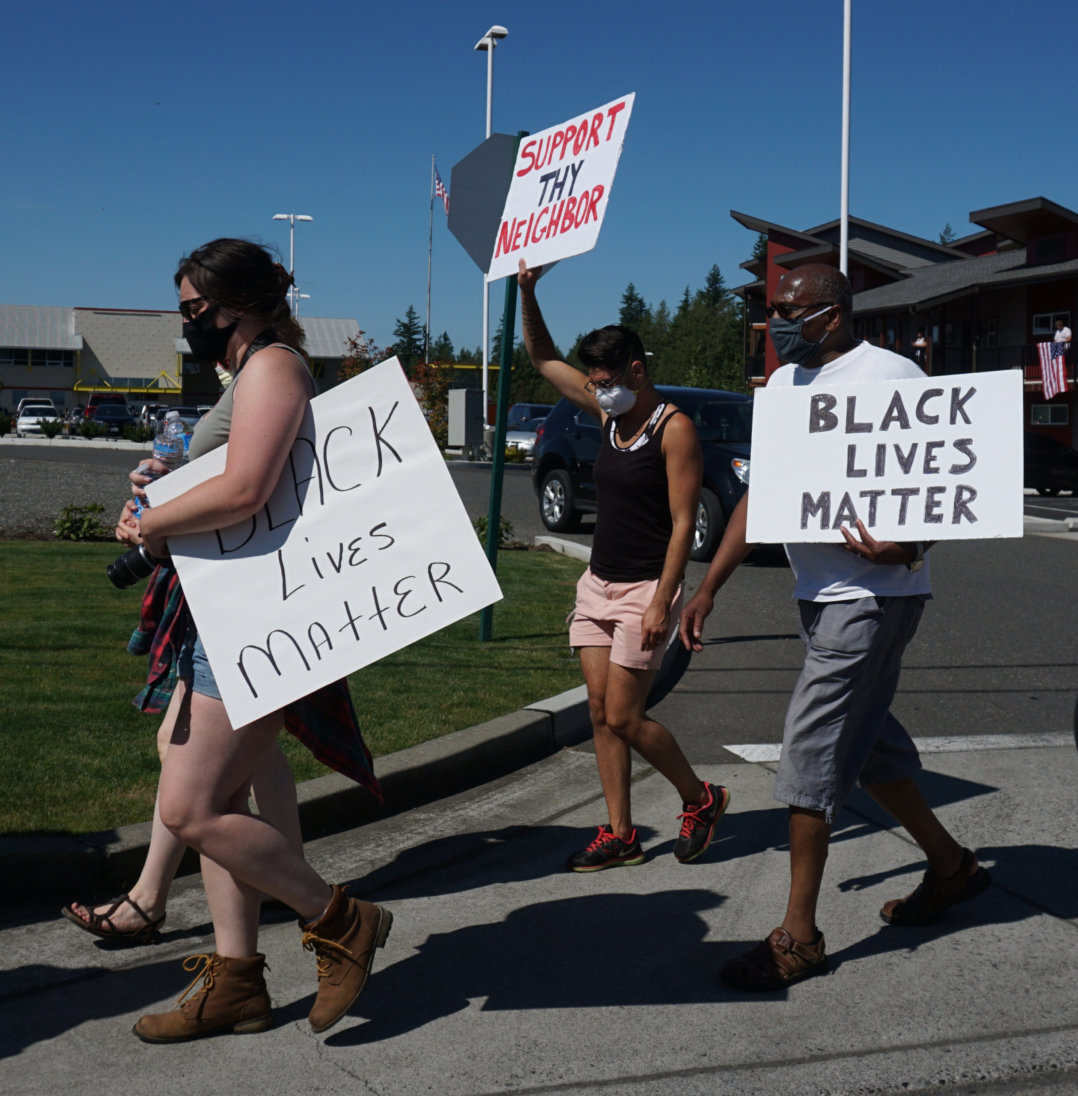
-Author Julienne Gage is an UnidosUS consultant and contributing editor to ProgressReport.co. Dr. Vernon Damani Johnson sat on her thesis committee for her class of 2000 master’s in cultural anthropology at Western Washington University in Bellingham, Washington.


